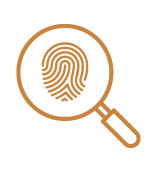Authentication &
Recognition
Biometric authentication uses human physical or behavioral characteristics to digitally identify a person to grant access to systems, devices, or data. Examples of these biometric identifiers are fingerprints, facial patterns, voice, or typing cadence. Each of these identifiers is considered unique to the individual and can be combined with other means of authentication to ensure greater identification of users.

Acess Control
An access control system manages the movement (entry and exit) of people within the internal areas of a condominium, business, commercial establishment, event, educational institution or any other place where access is restricted. This type of measure is essential for the safety of persons and the protection of property.In the case of condominiums, the access control system allows the generation of reports with the frequency data of each registered employee, the frequency at which a visitor or service provider enters the condominium and the times when this happens. It is also possible to monitor the times when there is greater movement (entry and exit) at the concierge and know precisely the amount of people who are inside the condo at desired times.An access control system usually consists of an access control kit, such as access cards, biometric reader and others. The access control kit is usually responsible for reading security equipment (biometric reader and / or cards) thus freeing user access. Information is usually sent to a storage center and stored on a web server safely and efficiently. The customer can, in turn, administer the system remotely, generating reports and registering new users.

Financial System
Thinking about security and technology banks in many Latin American countries use biometrics for secure transactions using biometrics.The technology is widely used in Brazil by several financial institutions in biometric ATMs, among 190,000 ATMs.90,000 electronics throughout the country feature biometric sensors. Efficient and convenient way to reduce fraud.

Retail
In the retail area, biometrics is present in the digital access sector, with a facial biometrics system that uses the reading of facial features for confirmation of identity. With a simple photo you can identify the customer with a high level of accuracy. This form of registration avoids damage fraud and ensures a more efficient shopping experience for the consumer.

Forensic
Biometrics is extremely important in the field of criminal investigation, its functions are, for example, identifying criminals wanted through facial recognition, identifying victims through digital and facial recognition.






